
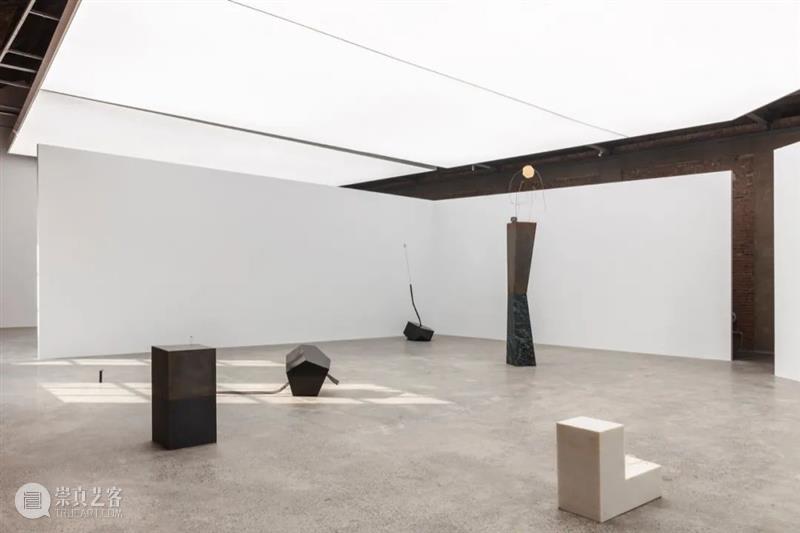
瓮中沙 The Sand from the Urns
胡晓媛 Hu Xiaoyuan
展期:2021年11月6日-2021年12月29日
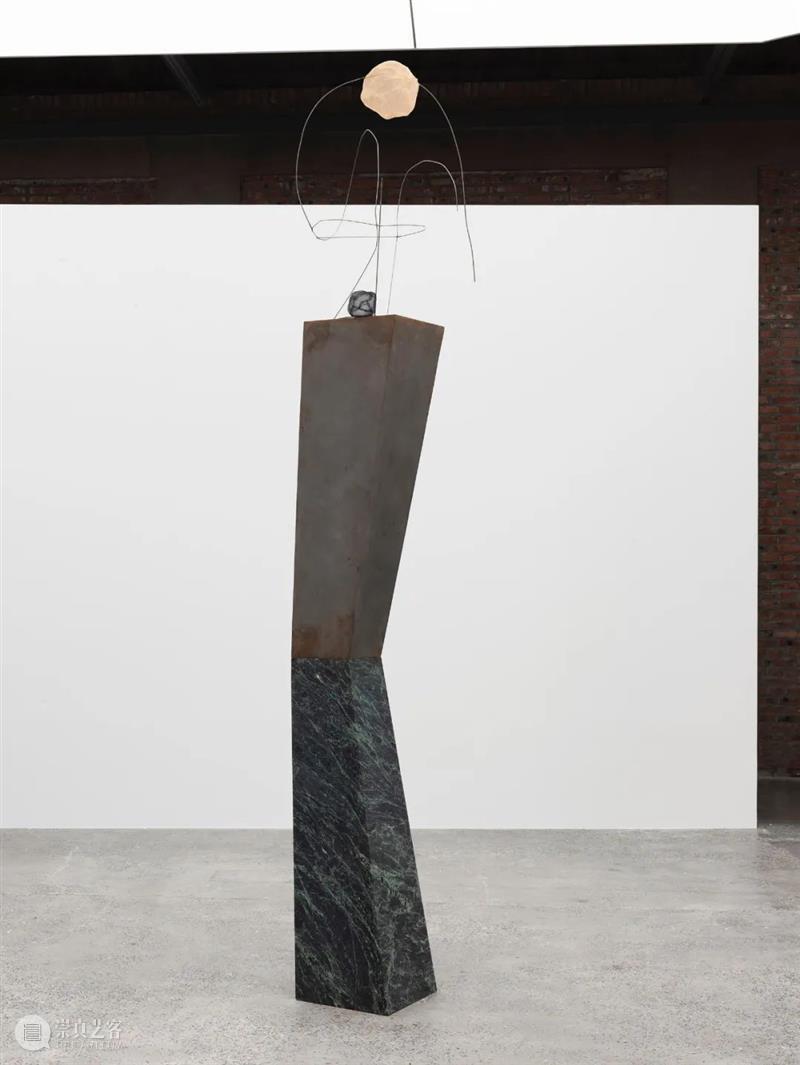
静置世 一 _ The Age of Stillness I
《静置世》作为首次展出的新系列,艺术家自造的题目借用了“人类世”的造词逻辑,将一个不将时间进行实体划分的时空纪元以及其内潜藏的动能提示出来。而如此辩证的时间性与其内里挟裹的叙事潜能也恰恰是《静置世》中六件作品的立足之地。《静置世 一》、《二》、《五》似在共享某种割舍与剔除冗余杂质后的静态,在缄默的张力中席地而坐,并且与混沌尚未到来前的沉寂共处着。在厚重的大理石、钢结构与纤细的铁丝、绡(生丝)结构交织的赋格曲中;在孤独静止与伺机勃发的辩证法间,此般物理架构似能让观者遁入“稳固”与“悄然逃逸”间的罅隙,并同时徘徊于“静置”与“默然滋长”的中间地带。
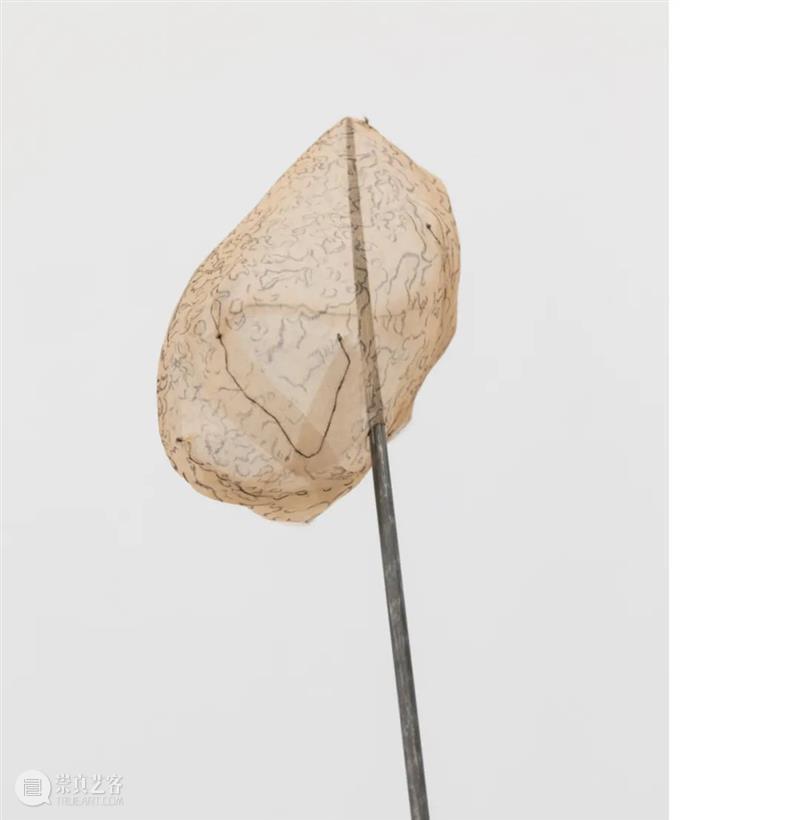
静置世 三(细节) _ The Age of Stillness III (details)
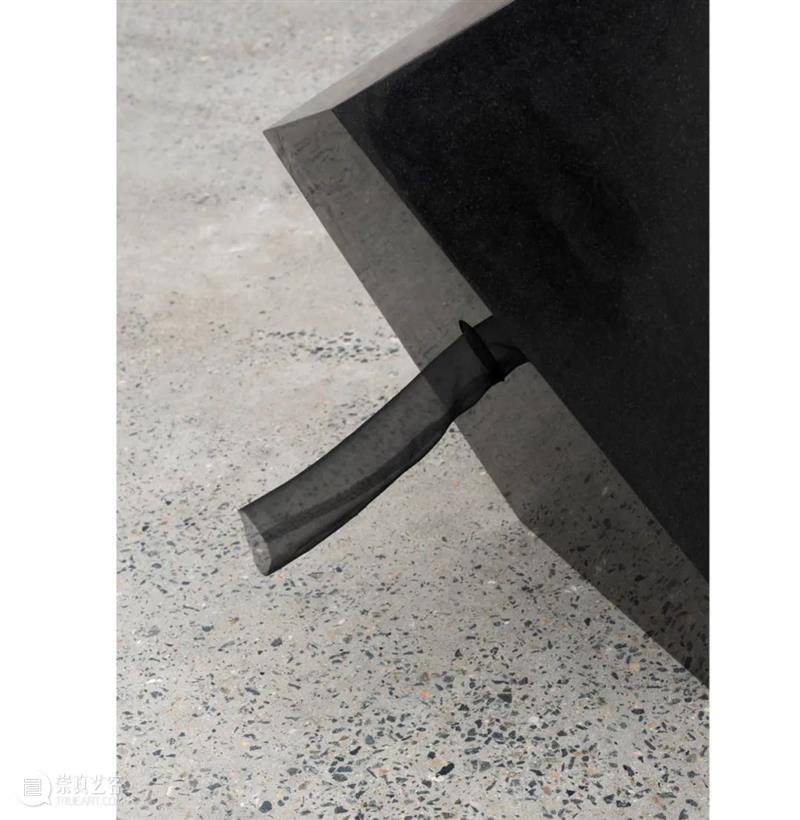
而《静置世 三》与《四》则呈现着被精心计算过切面的乌黑的大理石块,以其不规则的多面体几何结构与轻盈的绡(生丝)互为映射。这既是“动能”的节点,也是“消亡”的末端。《静置世 六》以微小的体量悄然矗立,在与其他作品产生强烈反差之时,也让岌岌可危的破碎性与不易被湮灭的坚韧感持续拉扯。
 石疑 | 再见,永恒 四
石疑 | 再见,永恒 四
作为《石疑|再见,永恒》系列的延续,胡晓媛把从各处拾捡的建材碎片与日常器物并置,辅以颇具未来性的太空铝,并在铝板上面用电锯暴力划擦,布满肆意的刮痕,让观者透过看似岌岌可危却实则稳固的架构去逐渐触及并勾勒出个体经验的根源。不论是有切肤之亲的日常用品(如使用过的卫生纸、逐渐干瘪的果实),还是来自疆界地带的礼器(如藏区的黑陶钵、祭祀用的铜器等),或是石化的牙、石器时代的石制箭簇头,它们看似在功能性上难以弥合,却在共感的层面环环相扣。艺术家把曾被熟视无睹或未被熟谙的它们一一放置,让无序的感知在“物”的排列间绵延生长。敬畏、痴迷、悬停的迟疑或者持续的矛盾,这些无法被精准诠释的感思,在预示着多维的环状结构和层叠架构中暗潮涌动。
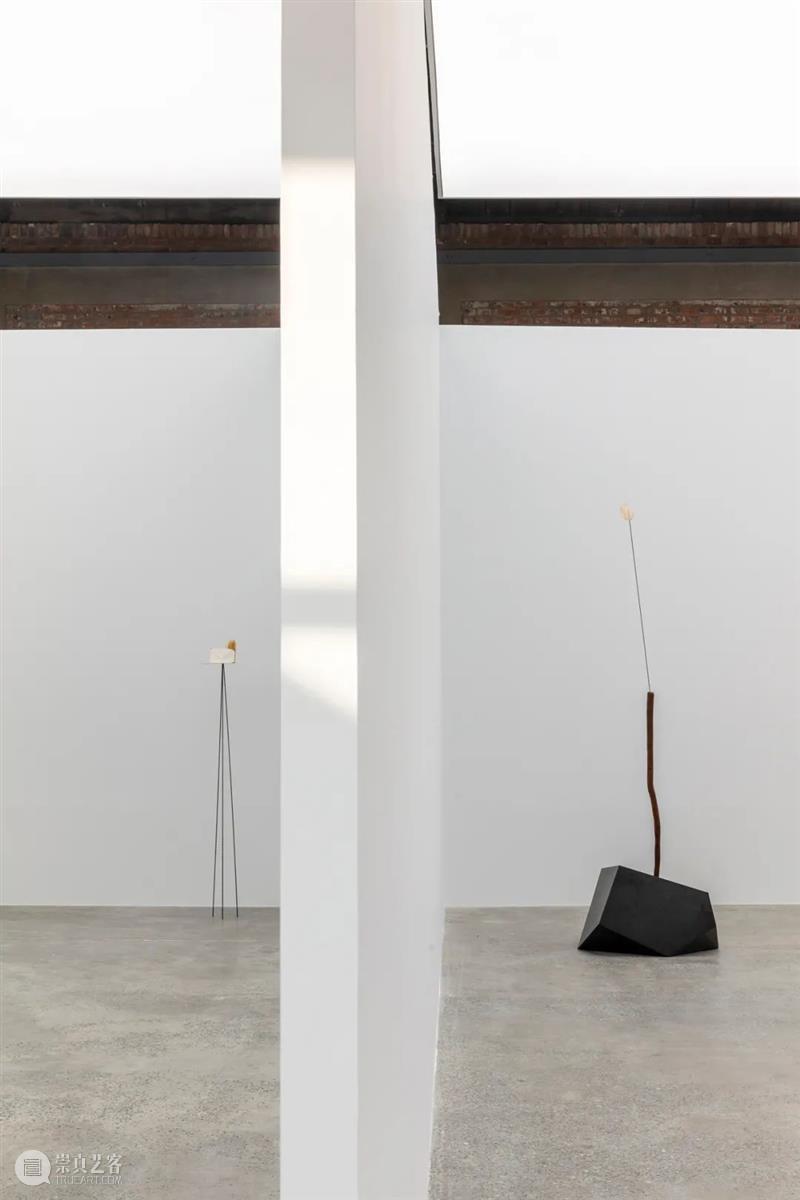
照片与诗都是这个与“进程”有关的展览的引言。
Hu Xiaoyuan’s latest solo exhibition at Beijing Commune, “The Sand from the Urns” has the potential to bring the spectators into the site where puzzling ways of perceptions grow from. A total of three series of installations are scattered inside and outside the walls on which the color of light cold grey was chosen by the artist with particular means. Amid these two irregular exhibition spaces are the artist’s implicit observations, imaginations, and wonders deriving from her everyday life. Throughout her artistic practice, Hu Xiaoyuan constantly investigates and revisits the very process of “becoming”, and that further leads her to such works that stand in between tangibility and intangibility, fleetingness and eternality. As much as Hu Xiaoyuan wraps her perceptions of individual living subjects in the materials, she also endows them with enough room wherein a wide range of reflections could brew.
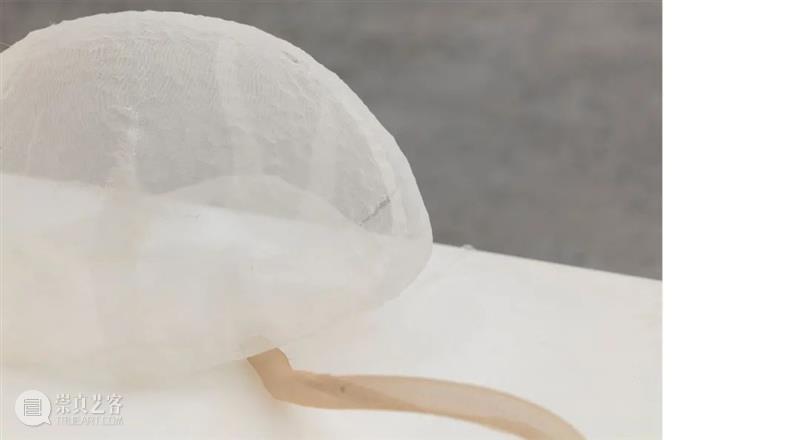
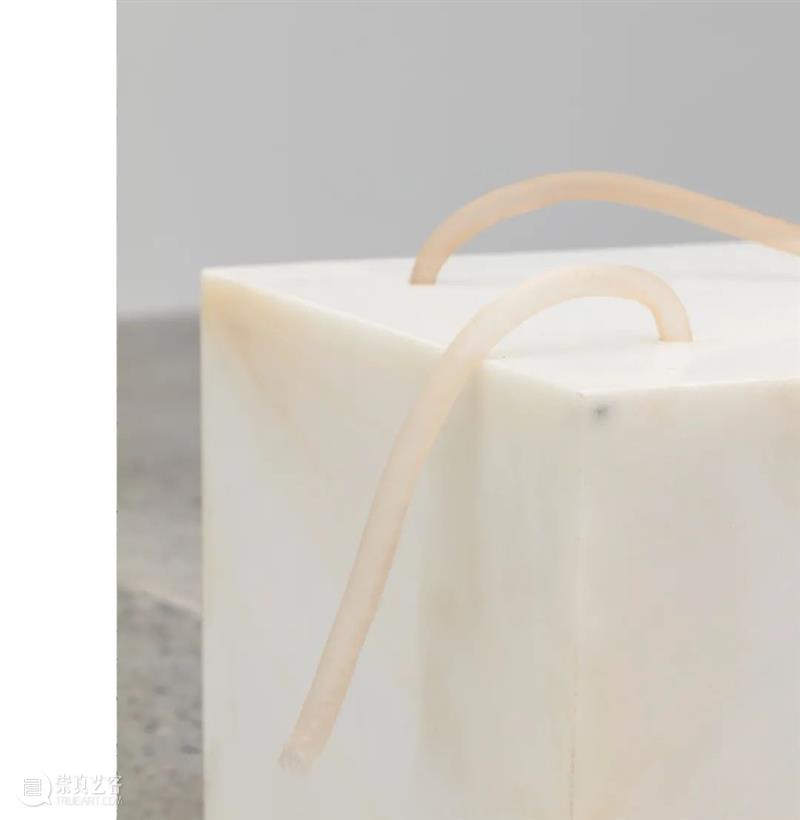
As the latest series, “The Age of Stillness” is named by Hu Xiaoyuan herself with the inspirations rooted in her understanding of “Anthropocene”. As a temporal process that has no means to categorize time itself, “The Age of Stillness” points to the settling progress that takes place prior to the chaos which is not yet to come. Such a hidden and dialectical tension is precisely the driven force lying at the core of this series that has a total of six pieces presented. For “The Age of Stillness I”, “II” and “V”, amid the fugue of the artificially stable marble blocks and the seemingly vulnerable steel wire and raw silk, the dialectics of permanent stillness and movement, there seems to be a collective tension standing still in permanent melancholy. Hu Xiaoyuan’s site, therefore, allows the spectators to constantly transit in between such paired yet contradictory states of tensions.
For “The Age of Stillness III” and “IV”, the dark-colored marble blocks, with their facades calculated, also blend into the lightness of the silk and wire structures, which are altogether translated into the very initial and determining point of movement. “The Age of Stillness VI”, indulged in fleetingness with its distinguishably small size, also fails to pull itself away from the continued tension between vulnerability and firmness.
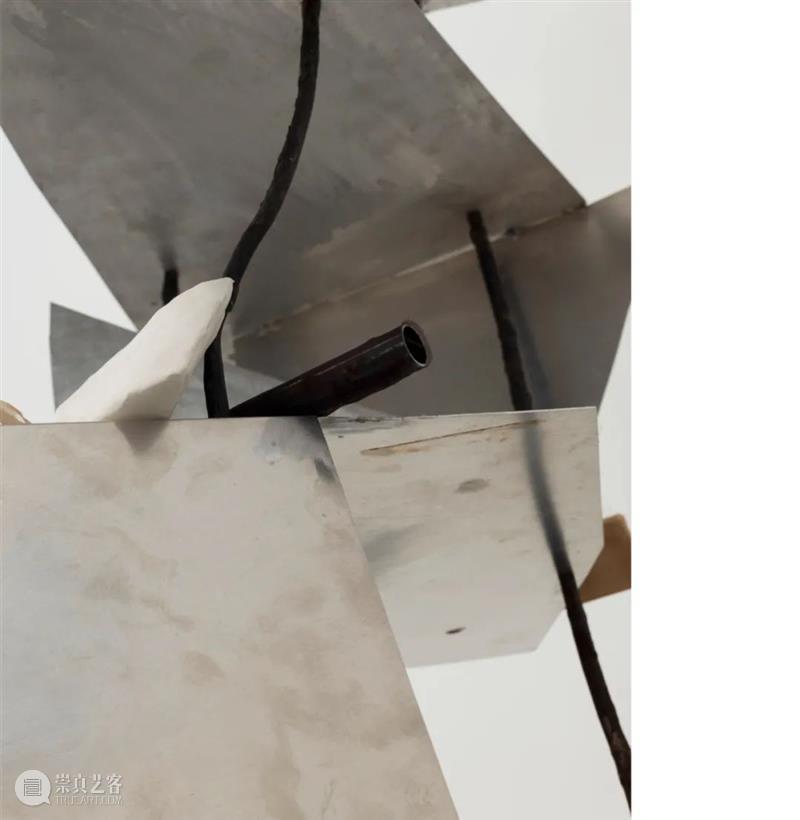
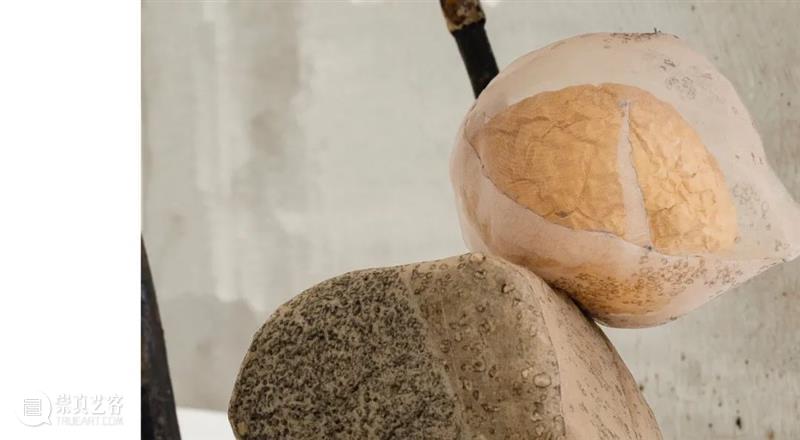
石疑 | 再见,永恒 三(细节)
Spheres of Doubt | Farewell, Forever III (details)
As a continuation of the series “Spheres of Doubt III – Farewell, Forever”, Hu Xiaoyuan puts the daily objects in dialogue with her collection of fragmented construction materials, complemented with space aluminum, on which the scratches were purposedly imprinted with the electric saw, to create the tone of futurism as well as to build up a seemingly vulnerable yet structurally tangible base via which the spectator’s personal life experiences could be approached. Among the objects are, on the one hand, the very intimate everyday objects such as the used toilet paper and the slowly shriveled fruit core. The ritual vessels collected from the artist’s trips to the borderlines, which include the black pot from the Tibetan region, the bronze sacrificial ware, etc., are, on the other hand, bringing another branch into the exhibited collection. Though they are irreconcilable with one another on the functional level, they could evoke the spectators of the sensible connections to varied extents. Either it is the often-ignored daily objects, or it is those that have not entered our conscious awareness, under the artist’s delicate treatment, seemingly disordered perceptions are given with the space to continually grow and expand. Might it be awe, obsession, or suspended hesitation and constant contradiction, such a hardly defined yet unspeakable sentiment is, therefore, ceaselessly circulating within this layered and cyclic spatial structure.
“A Day in Heaven” is also a new series that is exhibited for the first time at Beijing Commune. With the dried fruit wrapped in the raw silk placed on the top, the mixed-media painting on the wood piece intertwines closely with the thin rebar structures. It resonates with the former works as much as grows into new ideological images.
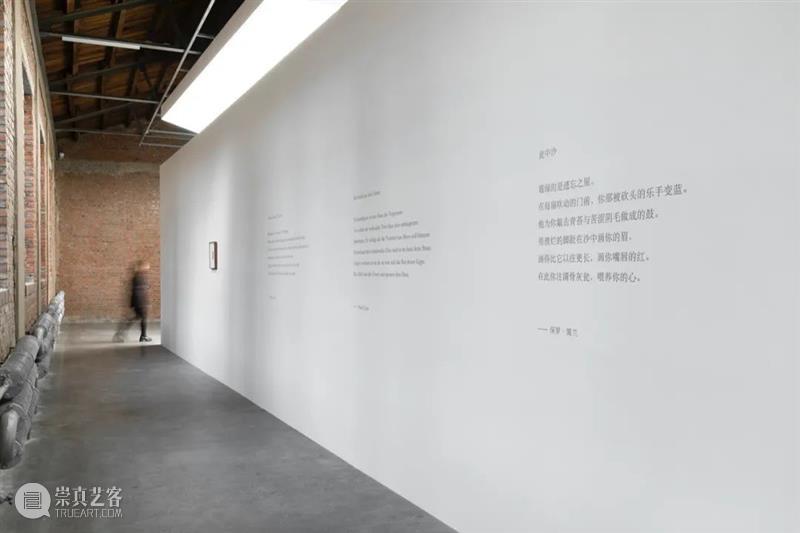
The exhibited works or the poem of Paul Celan inscribed on the wall is neither standing alone narrating itself nor does it intend to formulate a collective narrative with one another. Rather, they are layering on top of each other’s complex structure, which is comprised of unsettling perceptions itself, to unpack and retrieve the unspeakable emotions wrapped within. As for how the original version of “The Sand from the Urns” is not as metaphorical as the translated versions, Hu Xiaoyuan’s works also attempt to evoke emotions by keeping them unrevealed. Lies within the tangible and perceivable passion are the restrained hardness and concealed calmness. The extent to which the poetics of misleading interpretations, that of such undefined complexity which is borne out of and lost in translation, would reach is precisely why Hu Xiaoyuan attempts to present all three versions here. Collected personally by Hu Xiaoyuan, the photographic image hung on the wall was taken in 1943 by an unknown soldier. It is the poppy growing in the wilderness by the Mudan River that was photographed.
Both the photo and the poem should be seen as the entry pathways of this exhibition which is all about “Becoming”.
胡晓媛毕业于中央美术学院,现生活工作于北京。她的创作涵盖装置、录像、雕塑、绘画等媒介,以细腻、思辨和隐含的冲突性为特点,将其对“表象与本质间的差异关系”,与对“废旧和脆弱的物质碎片”的细微体察,诉诸于对材料的使用上(如绡(生丝)、宣纸、头发、木和金属等),从而以具体经验去探讨时间、空间、意识、存在等议题。胡晓媛曾参与的国内外重要展览包括香港M+新馆开幕首展(2021)、第九届台北双年展(2014)、第二届纽约新美术馆三年展(2012)、第十二届卡塞尔文献展(2007)等。她的作品曾在美国洛杉矶郡美术馆(LACMA)、德国曼海姆美术馆、美国哈默美术馆、美国加州橘郡美术馆、法国巴黎东京宫、荷兰波伊曼斯·范伯宁恩美术馆、美国坦帕艺术博物馆、美国圣彼得斯堡美术馆、瑞典Bildmuseet美术馆、巴黎现代艺术博物馆、香港M+美术馆、北京泰康空间、北京民生美术馆、北京木木美术馆、上海民生美术馆、上海油罐艺术中心、上海当代艺术博物馆、瑞士伯尔尼美术馆、巴塞罗那胡安·米罗基金会、上海当代艺术馆、上海外滩美术馆、北京尤伦斯当代艺术中心、瑞士巴塞尔美术馆等多处展出。她的作品亦被德国曼海姆美术馆、香港M+美术馆、上海外滩美术馆、美国哈默美术馆、中国上海当代艺术博物馆等公共机构纳入公共收藏。2019年,胡晓媛被香港M+博物馆提名第一届希克奖。
Hu Xiaoyuan (b. 1977, Harbin) graduated from the China Central Academy of Fine Arts, and currently lives and works in Beijing. Hu Xiaoyuan’s works have been widely shown in international art scenes. Important shows she has taken part in include “M+ Opening Exhibition” (Hong Kong, 2021), “The Great Acceleration: Taipei Biennial” (Taipei, 2014), “The Ungovernables: New Museum Triennial” (New York, 2012), and Documental12 (Kassel, 2007), etc. Her works have also been shown in numerous museums and art centers, such as Los Angeles County Museum of Art, Los Angeles; Tank Shanghai, Shanghai; Hammer Museum, Los Angeles; Mingsheng Art Museum, Beijing; Red Brick Art Museum, Beijing; chi K11 Art Museum, Shenyang, China; Qiao Space, Shanghai; Orange County Museum of Art, Orange County; Palais de Tokyo, Paris; Museum Boijmans Van Beuningen, Rotterdam; Tampa Museum of Art, Tampa, U.S.A.; Museum of Fine Arts, St.Petersburg, U.S.A.; Bildmuseet, Bildmuseet Umeå University, Sweden; Musée d’Art Moderne dela Ville de Paris, Paris; M+ Hong Kong, Hong Kong; Taikang Space, Beijing; M Woods Museum, Bejing; Museum of Contemporary Art, Shanghai; Sifang Art Museum, Nanjing; Kunstmuseum Bern, Bern; Fundació Joan Miró, Barcelona; Power Station of Art, Shanghai; Shanghai Rockbund Art Museum, Shanghai; Ullens Center for Contemporary Art, Beijing; Kunstmuseum Basel, Basel; and so on. Her works have been collected by Hammer Museum, Los Angeles; M+Museum, Hong Kong, and Power Station of Art, Shanghai, etc. In 2019, she was nominated for the first Sigg Prize by M+, Hong Kong.
了解更多北京公社展览及艺术家信息,请访问:
官方网站:www.beijingcommune.com
微博:@北京公社
微信:北京公社
Instagram: beijingcommune
Facebook: beijingcommune


已展示全部
更多功能等你开启...





 分享
分享